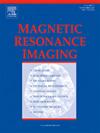MRI-based radiomics predicts complete responses to initial transcatheter arterial chemoembolization in virus-associated early and intermediate stage HCC
IF 2
4区 医学
Q2 RADIOLOGY, NUCLEAR MEDICINE & MEDICAL IMAGING
引用次数: 0
Abstract
Background
To evaluate the value of a multiparametric MRI-based nomogram on predicting response to transcatheter arterial chemoembolization (TACE) in virus-associated hepatocellular carcinoma (HCC) patients;
Methods
This study enrolled 235 and 51 patients from Center 1 and 2, respectively. All patients underwent baseline MRI scans before treatment. The least absolute shrinkage and selection operator (LASSO) regression method was used to screen radiomics features from intra- and peri-tumor areas to establish the radiomics signatures (RS). The nomogram model was built by integrating the RS and clinical predictors. Receiver operating characteristics (ROC), calibration and decision curve analyses (DCA) curves were used to assess predictive performances of radiomics models;
Results
In the training, internal validation and external validation cohort, the AUCs based on developed RS were 0.848, 0.759 and 0.762, respectively. The clinical model consisted of 4 significant distinct clinical predictors, including HBsAg, AFP, BCLC staging and size. To enhance diagnostic efficiency, we integrated 11 radiomics features and 4 clinical predictors to develop a nomogram model, which showed increased AUCs to 0.892, 0.851 and 0.787 in the training, internal validation and external validation cohort, respectively;
Conclusions
This study demonstrates that multiparametric MRI-based radiomics nomogram can preoperatively predict responses to TACE in virus-associated HCC.
基于mri的放射组学预测病毒相关的早期和中期HCC初始经导管动脉化疗栓塞的完全反应。
背景:评价基于多参数mri的nomogram预测病毒相关性肝细胞癌(HCC)患者经导管动脉化疗栓塞(TACE)疗效的价值;方法:本研究分别从中心1和中心2入组235例和51例患者。所有患者在治疗前都进行了基线MRI扫描。采用最小绝对收缩和选择算子(LASSO)回归方法筛选肿瘤内和肿瘤周围的放射组学特征,建立放射组学特征(RS)。结合RS和临床预测因子建立nomogram模型。采用受试者工作特征(ROC)、校正曲线和决策曲线分析(DCA)曲线评估放射组学模型的预测性能;结果:在训练队列、内部验证队列和外部验证队列中,基于开发RS的auc分别为0.848、0.759和0.762。该临床模型由4个具有显著差异的临床预测指标组成,包括HBsAg、AFP、BCLC分期和肿瘤大小。为了提高诊断效率,我们整合了11个放射组学特征和4个临床预测因子,建立了nomogram模型,结果显示,在训练队列、内部验证队列和外部验证队列中,auc分别增加到0.892、0.851和0.787;结论:本研究表明,基于多参数mri的放射组学图可以术前预测病毒相关性HCC对TACE的反应。
本文章由计算机程序翻译,如有差异,请以英文原文为准。
求助全文
约1分钟内获得全文
求助全文
来源期刊

Magnetic resonance imaging
医学-核医学
CiteScore
4.70
自引率
4.00%
发文量
194
审稿时长
83 days
期刊介绍:
Magnetic Resonance Imaging (MRI) is the first international multidisciplinary journal encompassing physical, life, and clinical science investigations as they relate to the development and use of magnetic resonance imaging. MRI is dedicated to both basic research, technological innovation and applications, providing a single forum for communication among radiologists, physicists, chemists, biochemists, biologists, engineers, internists, pathologists, physiologists, computer scientists, and mathematicians.
 求助内容:
求助内容: 应助结果提醒方式:
应助结果提醒方式:


